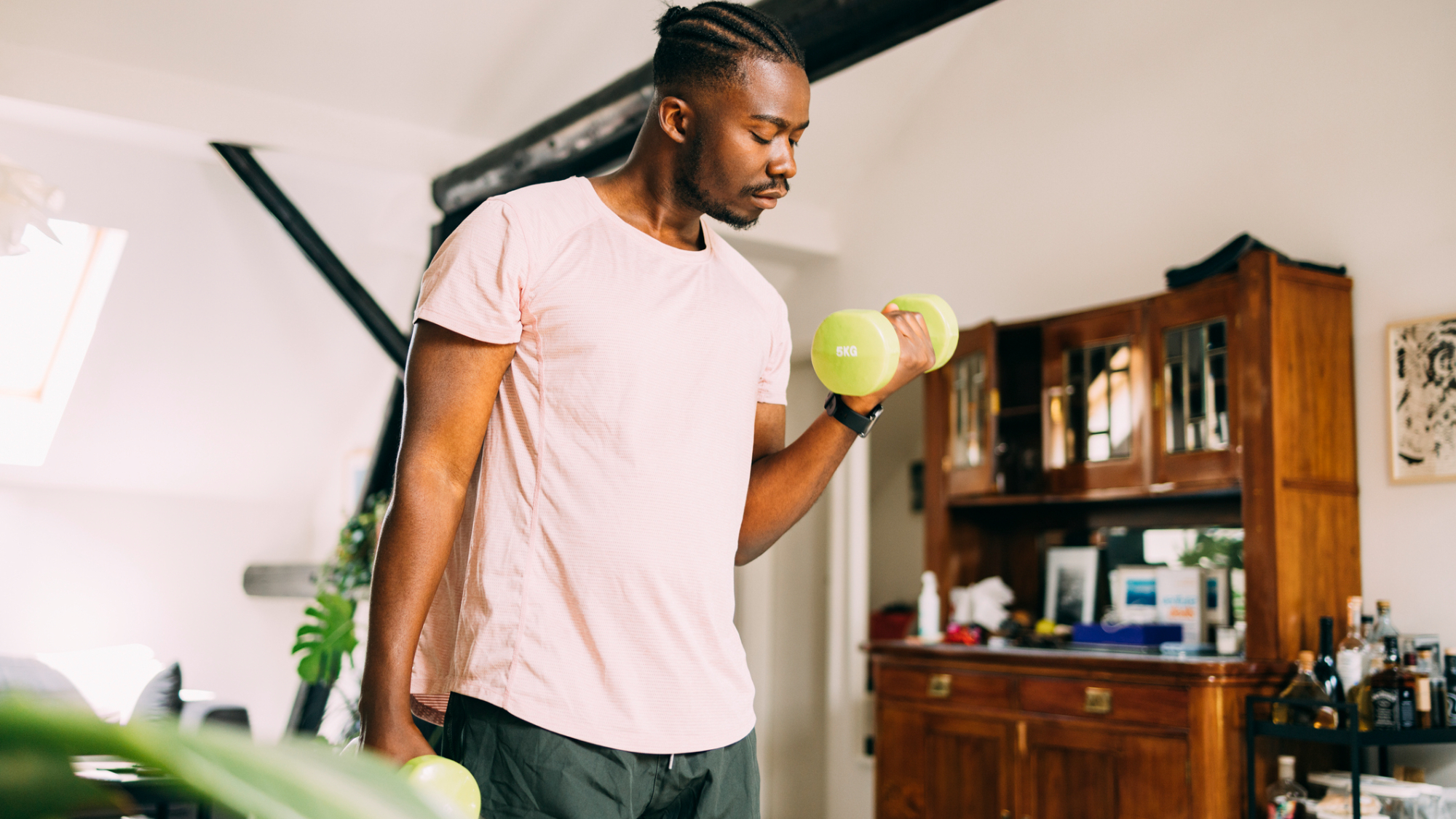
When I first walked into a gym a little over a decade ago, I made a beeline for a treadmill and stayed there for the duration of my session. I was a skinny soccer player, the intimidating weights section wasn't for me—or so I thought.
Since then I've discovered the joys of lifting weights. The exercise style offers plenty of physical and mental benefits and it's a lot more fun than simply running on a machine.
But you don't have to head to the gym to start lifting. With the right cocktail of bodyweight, dumbbell or kettlebell exercises, you can practice your form and start building strength from the comfort of your own home.
Not sure where to start? Try this seven-move workout from certified personal trainer (and expert tutor at Trainer Academy) Jordan Fernandez. It works muscles across your entire body with just a couple of dumbbells.
How to do Jordan Fernandez' full-body dumbbell workout
- Dumbbell squats: 3x12 repetitions
- Dumbbell bench press: 3x12 repetitions
- Dumbbell single-arm bent-over rows: 3x12 repetitions
- Alternating dumbbell lunges: 3x10 repetitions on each leg
- Dumbbell shoulder press: 3x10 repetitions
- Biceps curls: 3x12 repetitions
- Triceps kickbacks: 3x12 repetitions
Fernandez says you should start the workout with a five to 10-minute warm up. He suggests a quick three-round circuit of jumping jacks, arm circles and high knees; try doing 15-20 of each per round to get your blood pumping.
Next, perform the exercises listed above as straight sets, resting for 60 seconds between sets. So you'll perform 12 dumbbell squats, rest for a minute, then do another set of squats, rest, then finish with your final set. Once you've finished all three sets, move on to the next exercise.
Fernandez also advises finishing with five to 10 minutes of stretching. Have a read through our stretching exercises guide, if you need some tips. And if you're new to any of the exercises in the workout, scroll down for a quick explanation of how to perform each one.
1. Dumbbell squats
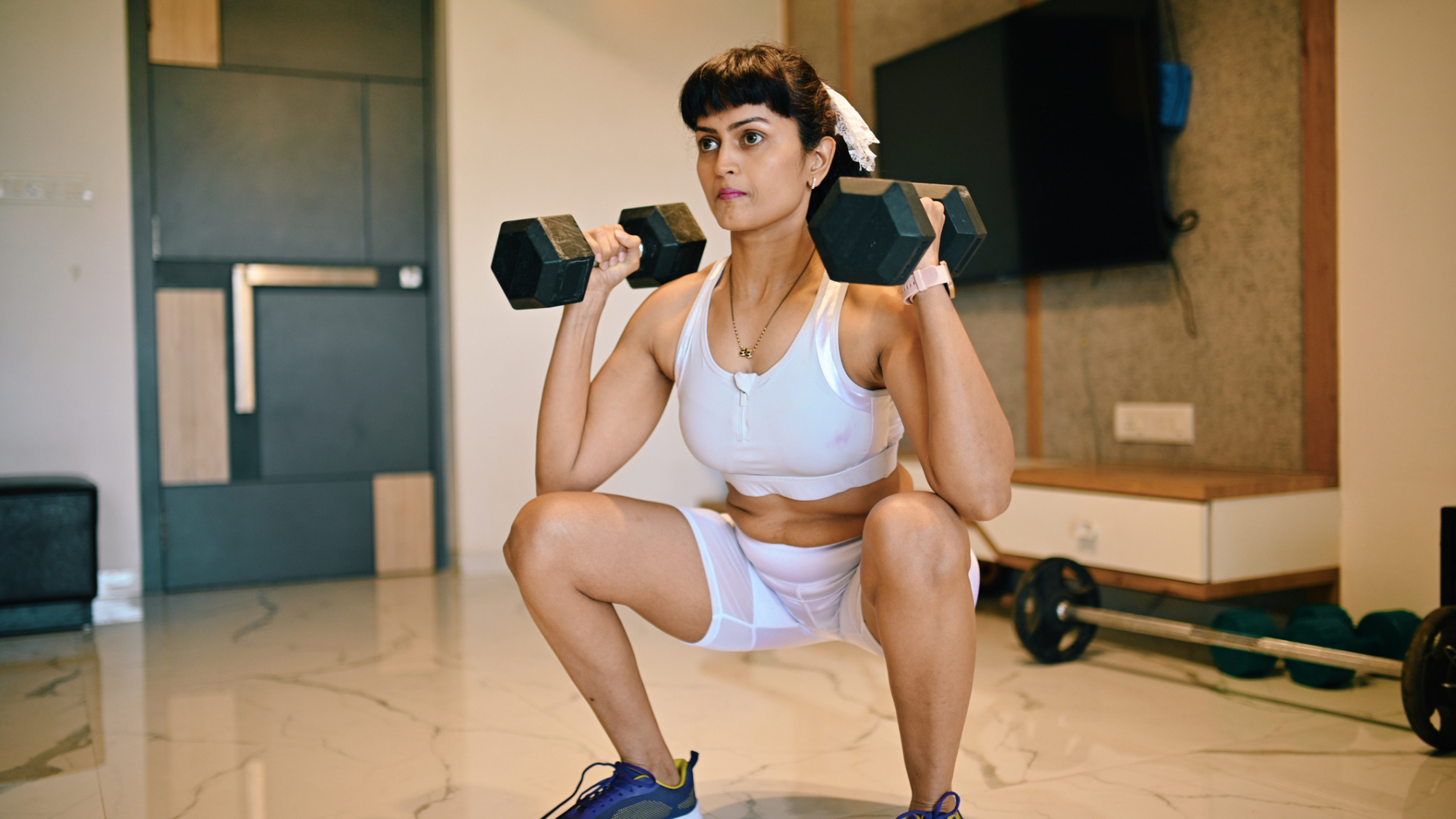
Sets: 3 Reps: 12
- Stand upright with your feet a little wider than hip-distance apart and your toes pointed outwards. Hold a dumbbell in each hand at shoulder height, as pictured above.
- Push your hips back to start the squatting movement then bend your knees to lower yourself towards the ground, as if you were sitting down on a chair.
- Continue to lower your hips until your thighs are parallel with the ground, then drive through your feet to return to the starting position. Throughout this movement, your spine should stay neutral (straight) and your chest should face forwards rather than down.
2. Dumbbell floor press
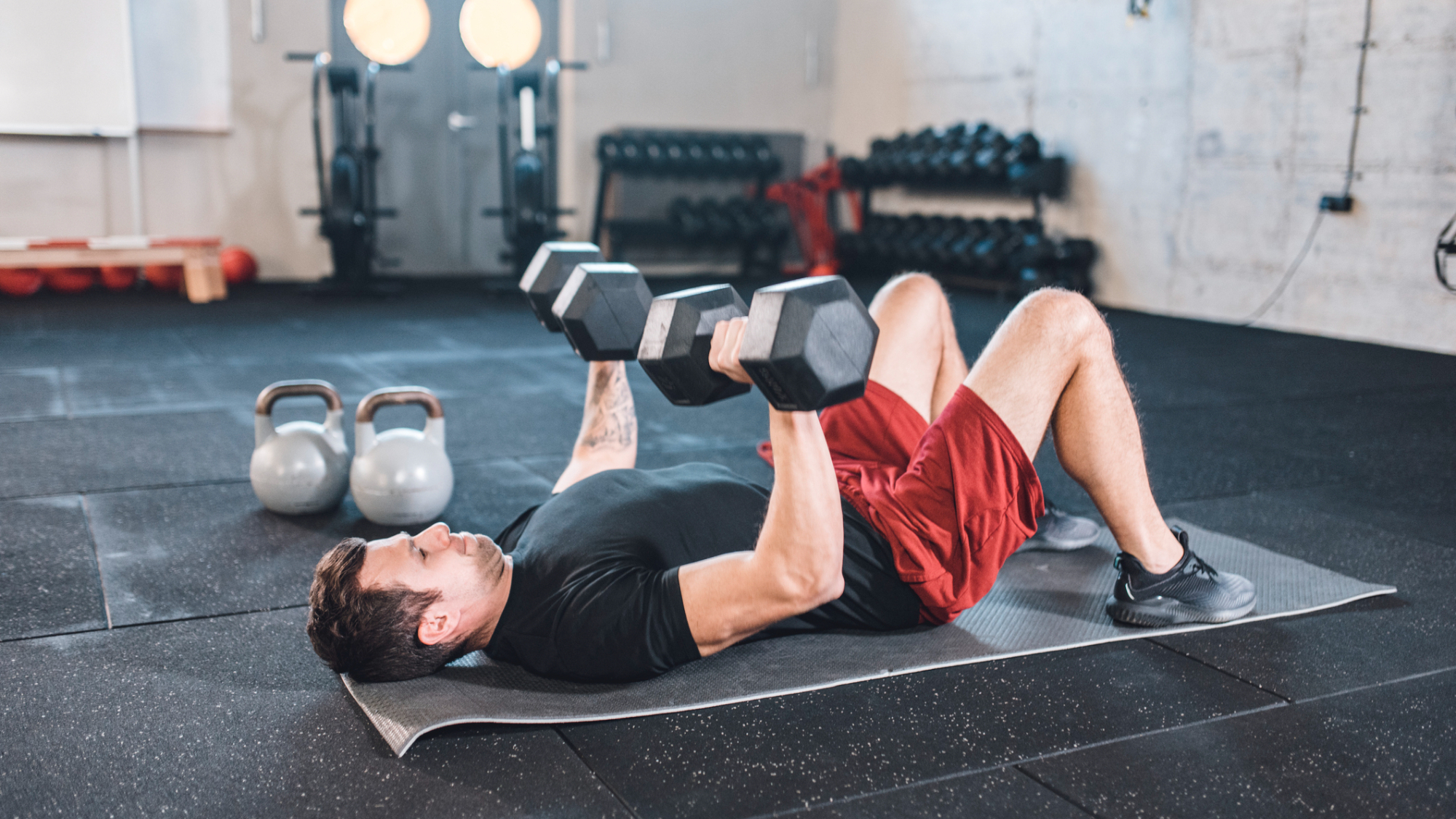
Sets: 3 Reps: 12
- Lie on your back with your knees bent. Grab a dumbbell in each hand and hold them with straight arms above your chest.
- Bend your arms, without flaring them out to the side, and lower the dumbbells until your elbows gently touch the ground.
- Using your chest, shoulder and triceps muscles, push the dumbbells back towards the ceiling until your arms are fully extended again.
3. Dumbbell single-arm bent-over row
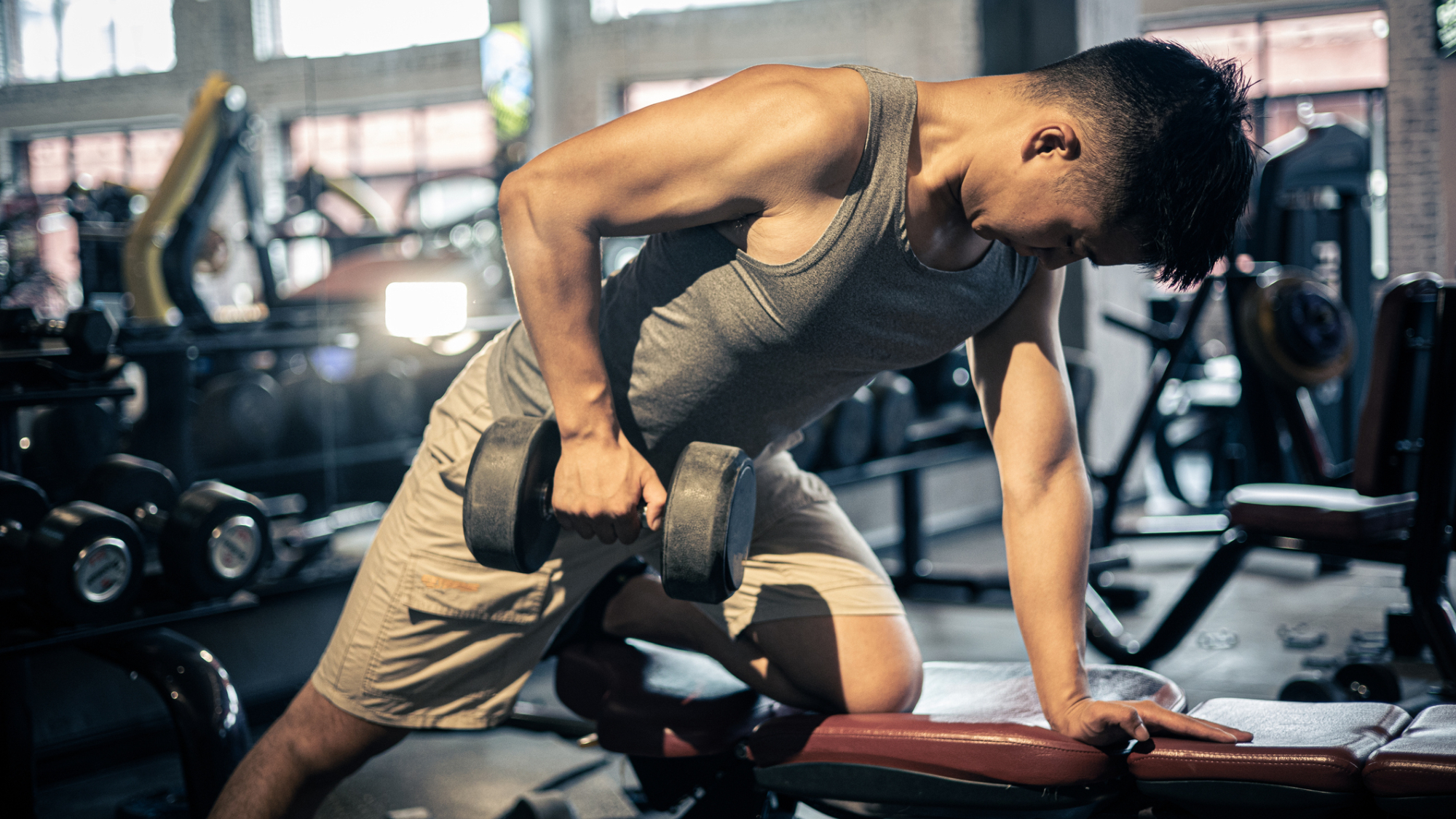
Sets: 3 Reps: 12
- Find a weight bench or sturdy surface like a chair or table. Stand facing it and place your left hand against it for support. Hinge at the hips so your back is nearly parallel with the ground. Pick up a dumbbell with your right hand and hold it with your arm extended towards the floor.
- Retract your shoulder blades then pull the dumbbell towards your belly button.
- Once the dumbbell is almost level with your torso, pause for a second then control it back to the starting position, where your arm is fully extended. Do this 12 times then switch arms and repeat.
4. Alternating dumbbell lunges
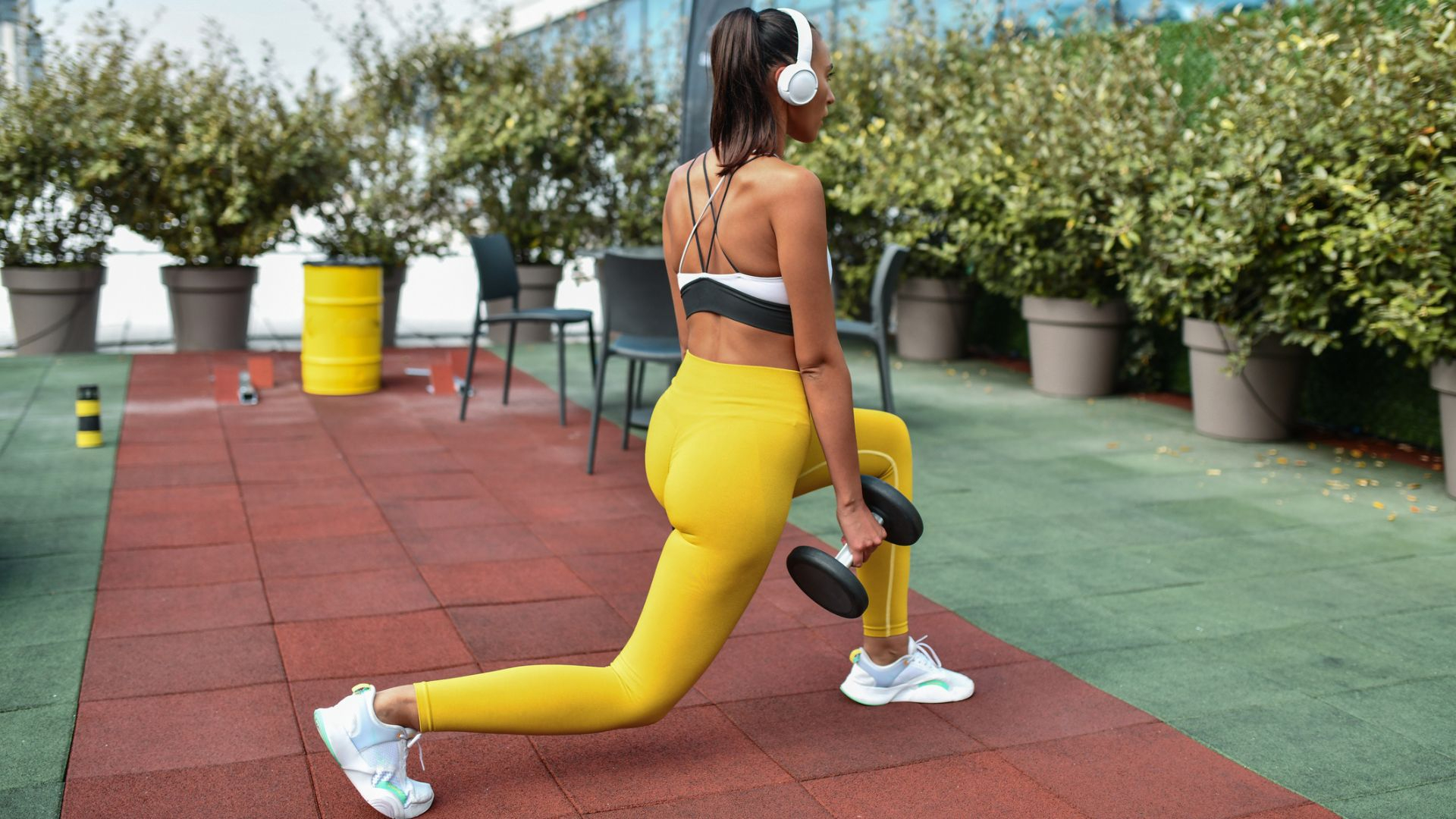
Sets: 3 Reps: 10 (on each leg)
- Stand with your feet hip-width apart and a dumbbell in each hand.
- Step forward with your right foot and, as you do, lower your left knee towards the ground. Continue to lower your knee until both knees form roughly a right angle.
- Drive through your right foot to return to the starting position. Repeat on the other leg.
5. Dumbbell shoulder press
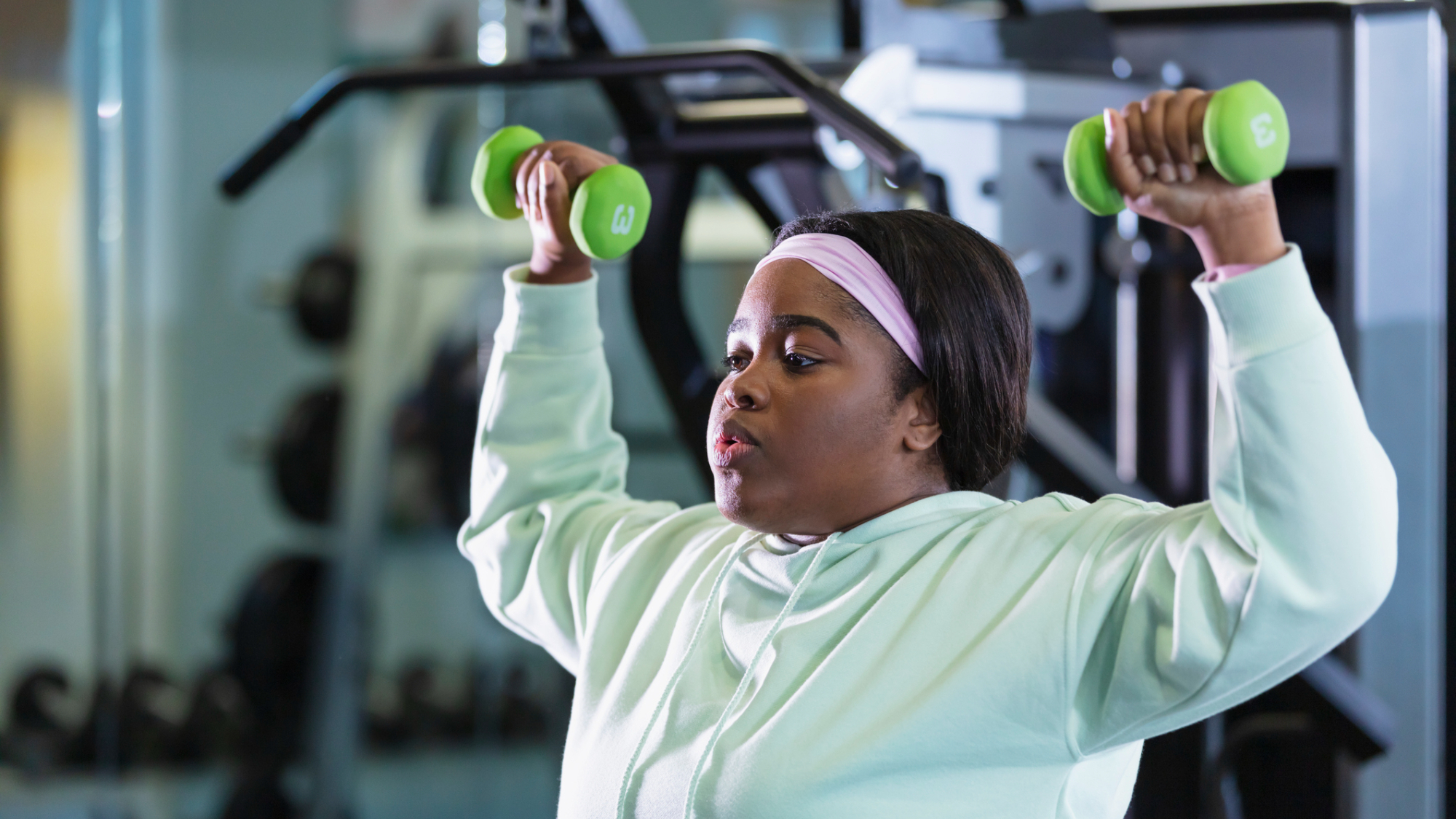
Sets: 3 Reps: 10
- Stand upright with a dumbbell in each hand. Raise the dumbbells so you're holding them just in front of your shoulders.
- Press the dumbbells overhead until your arms are almost fully locked out, driving your head forwards as you do so your biceps end up by your ears.
- Control the weights back to your shoulders and repeat.
6. Alternating biceps curls
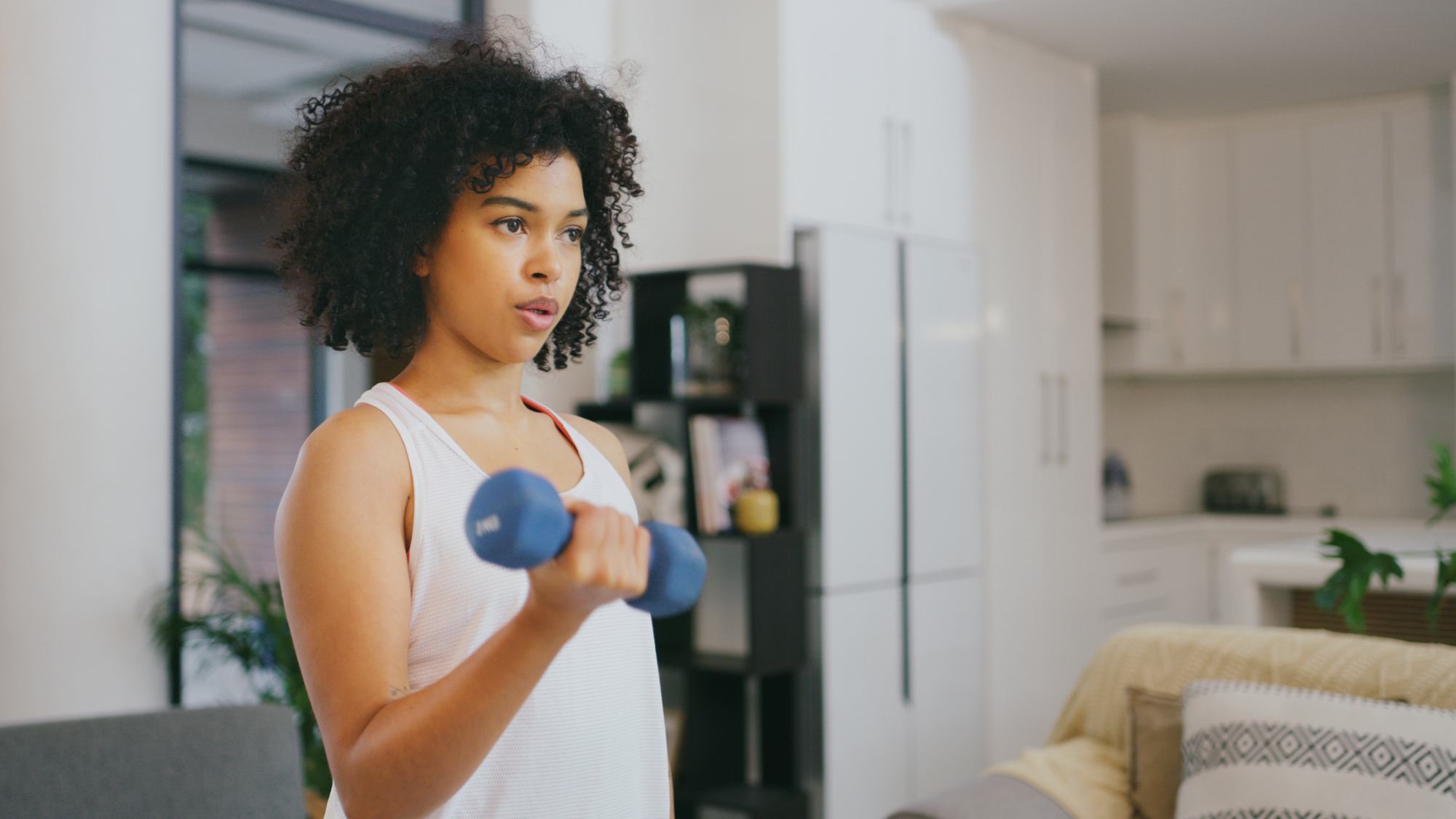
Sets: 3 Reps: 12
- Stand upright with your arms by your side and a dumbbell in each hand.
- Keeping your elbows tight to your sides, "curl" the dumbbell in your right hand towards your shoulder.
- Slowly, control it back to the starting position then repeat on your left arm.
7. Triceps kickbacks
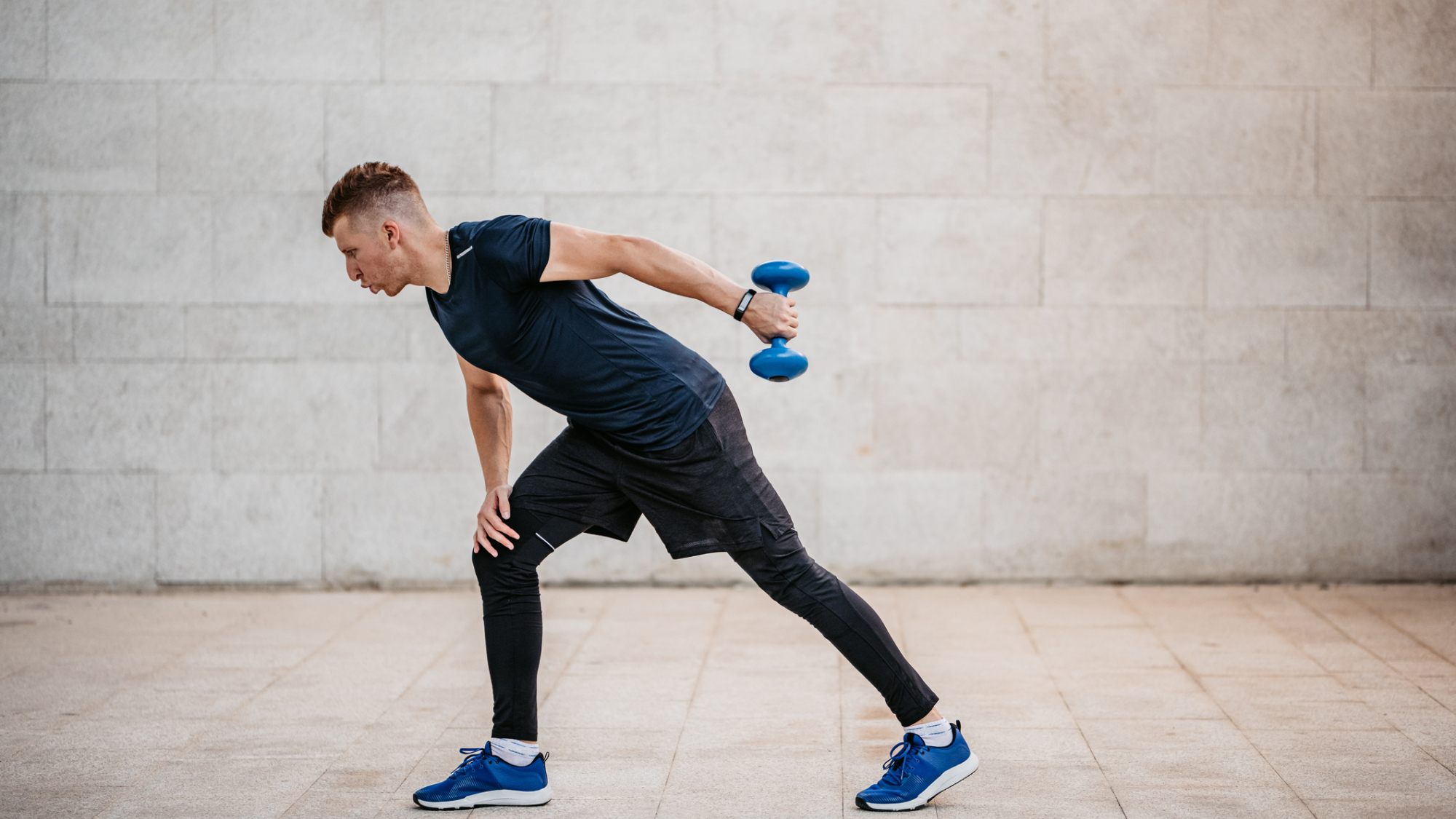
Sets: 3 Reps: 12
- Hold a light dumbbell in your right hand. Stagger your stance then hinge at the hips to bend over, keeping your back flat. You may want to put your left hand on your front knee or a sturdy surface in front of you for support. Row the dumbbell up so your upper arm is parallel to the ground. This is where the repetition begins.
- Keeping your upper arm steady, straighten your arm backward, then control the dumbbell back to the starting position. Do this 12 times then switch arms and repeat.
Benefits of training with dumbbells
Dumbbells are an excellent addition to your exercise equipment arsenal if you're looking to build strength, muscle and all-round fitness at home.
"Dumbbells are relatively compact, making them ideal for those with limited space, and they also allow for unilateral exercises (working one side at a time), which can help address and correct muscle imbalances," says Fernandez. And that's not all.
"Compared with traditional machine exercises, using dumbbells requires more stabilization from the smaller supporting muscles, leading to improved muscle coordination and joint stability," he adds.
If you're likely to be focusing on dynamic exercise styles like HIIT, a robust, cast-iron fixed-weight set will probably be your best bet. However, for strength training at home, there's another option that might be better suited to your goals.
"Adjustable dumbbells are a great at-home tool since they offer the ability to gradually increase weight as strength improves. This can lead to consistent strength gains and muscle hypertrophy [a phenomenon otherwise known as progressive overload]," says Fernandez.
Fancy a pair of Fernandez-approved adjustable dumbbells? Then take a look at our guide to the best adjustable dumbbells







